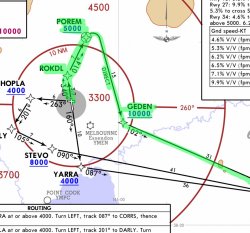AviatorInsight
Established Member
- Joined
- Oct 5, 2016
- Posts
- 1,396
Removal of landmarks:
Yesterday the Hazelwood power station chimneys were removed. Apparently they were a landmark for local pilots to look out for.
When landmarks such as this are removed are charts updated or a notice issued to the nearest airports to remind pilots of the change?
In this instance pilots using TGN and probably SXE would be most affected.
TIA.
There are no current NOTAMs (Notice to Airmen) for Latrobe or West Sale. Even the FIR and Head Office NOTAMs make no mention of it. I don’t see why they would to be honest, an obstacle has now been cleared and no longer poses a threat. Whether they were there before I’m not sure.
On navigation charts though, obstacles are allowed to exist without reporting up to 360ft AGL. Above this height it is mandatory to be reported. With the chimneys sitting at around 400ft AGL they would have existed on the charts and with the next air publication cycle, they will get removed.
You might notice buildings and obstacles having certain lights flash or be steady red at night? The same principle applies.















